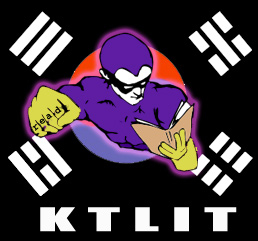 Previously:
Previously:
I) Hyangga and Koryeo Kasa
II) Sijo & Kasa
III) Classical Fiction
IV) Pansori
V) Introduction to Modern Literature
VI: Enlightenment
VII: Background to Colonial Lit
VIII: The History of Korean Modern Literature
VIII: Themes & Approaches to Fiction
Whew, the chapters are getting longer.^^ Here is my first swipe at the colonial period, and as always I appreciate feedback from gentle cluckings of the tongue, to vicious takedowns.
As mentioned in the previous chapter, the questions first asked in the Enlightenment continued to be asked in the colonial period, but the colonialization by Japan made it clear to Korean intellectuals that the stakes had risen tremendously. The reaction was swift. In 1915, one of the fathers of modern Korean literature, Yi Kwang-su, laid out his modern manifesto. “We are a new people, without ancestors, without parents, that came from Heaven in the present.” (Kim Hunggyu, 194.) This belief was amplified in 1930 by Ch’oe Caeso, who argued, “In terms of contemporary culture, our attitudes are dominatd by those of Western culture, and not by those from the Choson period and before…. This will and must continue in the future (Kim, loc. cit.).
This catastrophism paralleled the very real shakeups which Korea had endured including the stresses of a modernization movement already somewhat underway; the collapse of the Joseon/Confucian sociopolitical structure, and the harsh realities of Japanese invasion and colonialzsation. As note previously, conditions had been preparing for modernization including, increased education, the shift to hangul across society including into newspapers and books, and the introduction of modern western concepts. The latter introduction had begun to chip away at how Koreans and Korean authors saw themselves at the same time increasing the importance of internal agency and of the exigencies of daily life.
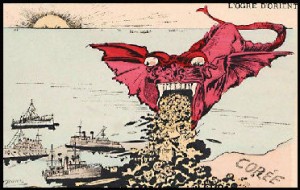 Baby Steps: 1910-1919
Baby Steps: 1910-1919
If the Enlightenment was the conception of modern Korean fiction, this period might be considered its infancy.
The apogee of this approach was reached by Yi Kwang-su in 1917 when he published Heartless, a clearly didactic work, but one that focused on the necessity for Koreans to fix their social lives before being concerned with political reality. In Heartless Yi Hyong-sik is an orphan and teacher who works to make education more modern and less Confucian. His youthful crush Yongchae becomes and entertainer and he leaves her to marry the daughter of a wealthy diplomat. Yi Hyong-sik wants a modern marriage, one based on love, and while he does love Sonhyong he harbors the suspicion that she has married him at the will of her father. Yongchae, meanwhile, contemplates suicide by is dissuaded by a feminist, Pyongguk, who persuades Yongchae, that Yongchae’s life is worth more that the wish of her parents and a wife’s life, similarly, is worth more that the wishes of a husband. Yongchae, the feminist argues, is free to choose the traditional paths, but she can also create her own life. As the book ends Yi Hyong-sik and Pyonguk persuade Yongchae and Sonhyong to work with them in the struggle for their personal enlightenment and that of the nation.
Another classic story of the era is Yom Sang-Sop’s On the Eve of the Uprising. Yom is the same guy who wrote the epically long Three Generations. This story was strongly influenced by Japanese writing style (first person, confessional) of the time. It is a relatively straight-forward account of the Korean situation before the March First Movement.The narrator is a rather selfish man named Inwha, a Korean studying in Japan. He has to return to Korea when he gets a telegram saying his wife is on the verge of dying. He has adopted a philosophy of self-reliance that is actually more like a philosophy of use everyone around you, but the trip home makes him aware of his personal colonial posittion and that of his country. He suffers from constant racial discrimination, both in Japan and at home. When he hears that his wife is dying (he was married quite young and she got ill during childbirth, which occurred while he is in Japan. Inwha is also a bit of a misogynist, and women might not enjoy reading his treatment of them, particularly his dying wife. Yom uses the tomb as a recurring symbol of his wife’s condition, his condition, and the condition of Korea as a nation.
While these books were being written, the Japanese were tightening their colonial control. Private newspapere were shuttered while the Korea Daily News, the largest newspaper before colonialism, was converted into a mouthpiece for the state. Censorship was common and the 1907 Newspaper Law and 1909 Publication Law severely restricted who could publish. Needless to say, this resulted in a great deal of of pressure that would come to a boil in the March 1st Movement.
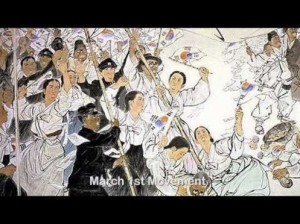 1919 – 1936
1919 – 1936
The March First Independence Movement of 1919 led to the Korean people developing more positive outlook. Even better, the movment led to subtantive changes. In 1920 the Cultural Policy rolled back some of the restrictions on publishing and the results were immediate. In the first year of the new policy some 409 permits were given for journals and magazines. In one year, this represented an increase of nearly 400 permits over the number given over the entire previous decade
After the shocks of the collapse of the Joseon Dynasty and the Japanese invasion, the relative successes of the March First Movement led to increased emphasis on themes of individuality and self-discovery. The literary magazines preciously mentioned (Ch’angjo (Creation) (1919), P’yeho (The Ruins) (1920), and Paekcho (White Tide) (1920 or 1922?) gave authors places to publish, and literary groups began to cohere. Ruins and White Tide were consciously anti-didactic, focusing on “pure” literature, and it was was at about this time that a split began to develop between pure and didactic literature. The slpit was by no means complete, as authors like Yom Sang-seop and Kim Dong-in managed to combine biting social commentary with entirely realistic portrayals of life. At the same time, national newspapers evolved (including the Chosun llbo and Dong-a Ilbo) and these provided sites for the serialization of new Korean fiction
The new novels took some of the trends of the last of the Classical period, particularly a focus on real-life and real-life problems, and melded them to conceptual concerns of the enlightenment period and that of the newly subjugated Korea, the failure of aspects of Confucianism, modern education, and political sovereignty. Stylistically, the new novel was similar, melding approaches that had gradually evolved in the enlightenment, specifically and increased focus on realistic prose and realistic verbal description. The issues of the day, became the plots of the novels of the day, as description replaced narrative and analysis replaced chronology. The novels were still overwhelmingly didactic, almost universally following “the reproval of vice and promotion of virtue (Lee, 11),” and failing to feature individually described characters in favor of cliches (evil stepmother, murderous villains), and contrived happy endings. New novels were typically in common speech, printed in hangul, and focused on modern education, and a new focus, sexual equality.
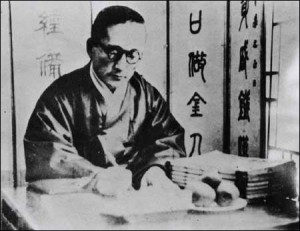 The path Yi Kwangsu had blazed was quickly followed by other writers including some who were not didactic. Kim Tong-in was paramount among the “art for art’s sake” writers and was one of the co-founders of the journal Creation, in which his debut story, the Sorrows of the Weak was published. Kim rejected the argument that literature must be didactic at the same time the he rejected the idea that art must reflect reality exactly. Despite his “literary” approach, Kim was not immune to writing works with clear didactic message, or realistic ones.. In 1925, Kim published one of his most famous works, Potatoes, which was a breakthrough in Korean “realist” fiction, but also a scathing portrayal of the wrong a social system could inflict on individuals. In Potatoes, a young girl from a moral family is sold in marriage to an older widower who is in decline and over time she is dragged into a sewer of sexual depravity, in which she is finally killed.
The path Yi Kwangsu had blazed was quickly followed by other writers including some who were not didactic. Kim Tong-in was paramount among the “art for art’s sake” writers and was one of the co-founders of the journal Creation, in which his debut story, the Sorrows of the Weak was published. Kim rejected the argument that literature must be didactic at the same time the he rejected the idea that art must reflect reality exactly. Despite his “literary” approach, Kim was not immune to writing works with clear didactic message, or realistic ones.. In 1925, Kim published one of his most famous works, Potatoes, which was a breakthrough in Korean “realist” fiction, but also a scathing portrayal of the wrong a social system could inflict on individuals. In Potatoes, a young girl from a moral family is sold in marriage to an older widower who is in decline and over time she is dragged into a sewer of sexual depravity, in which she is finally killed.
Korean literature of this period was also split into national and class literature, with the class literature expanding in the mid 1920s and focusing on class consciousness and the creation of “farmer literature” and “labor literature.” The national literature of the first half of the decade often focused on romantic representations of of individual and his/her hopeless position in society. Hyeon Chin-geon’s A Society That Drives You to Drink (1921) is a prime example of this kind of work (as is Na Hye-Seok’s Kyunghui). I In 1925 KAPF (Korean Artists Proletarian Federation) was founded with the intent of class liberation. KAPF used socialist realism to increase class consciousness and to reveal the plight of the working classes. This was obviously problematic to the Japanese, who regularly harassed KAPF, but allowed it to exist, partly because it represented a schism within Korean literature between activists and naturalists. With respect to class literature, Professor Bruce Fulton particularly notes Yi Ki-Kyeong’s (Who eventually migrated to North Korea and then dissapeared) A Tale of Rats as an example of this kind of fiction.(Kim Chong-un, 3). A Tale of Rats explores Korean society, particularly its unbalanced economic structure, from the perspective of the amusingly wise Thunder Giant, an enormous rat with a fine sense of philosophy and irony who notes the differences between the lives of landlord Kim and tenant farmer Su-dol.
The new fiction that developed during this period often focused on individuals out of step with social realities, including intellectuals unmoored from reality, and the horrific existences of the lower classes. Over the decade of the 20s the literature moved from the romantic, descriptions of individual trapped in melancholy, to more realistic descriptions. Lucky Day, by Hyon Ching-gon used very precise detail to explore the kind of Issue that Yi Sang explored in the 1930s with expressionism: The daily problems people faced in dealing with the horror of their daily lives. One of the classic works of this period, though a bit long Is Yom Sang-sop’s Three Generations which, as its name suggests, follows three generations of Koreans, and in doing so neatly outlines the impacts of the Joseon Dynasty, modernism, and colonialism on a Korean family.
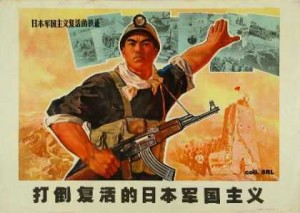 1936s – 1945
1936s – 1945
In the 1930s the Japanese increased their militarism and began to apply ideological pressure across the Korean cultural spectrum. The search for a common, “Korean” ideology, which had been the focus of the first two sections of the colonial era waned, and the literature began to fracture and explore new approaches and tactics. Yi Sang’s Wings (Nalgae), mentioned earlier, is one of the prime examples of this. Yi used alienation, dissasociation, even schizhophrenia to separate his narrator from the world in which he lived. A Day in the Life of Kubo the Novelist, by Pak Tae-won is consciously modern. As the title suggests it is one day of Kubo’s life, recorded by order of events, and told in a present tense stream of consciousness interspersed with a stream of consciousness forays into memory. As an added bonus, this story is illustrated by Yi Sang, The two, apparently, were best friends. Kubo takes us on a tour of Seoul, traveling to Gwangwhamun, bars, teahouses, a train station, even past a row of prostitutes. There are little black and white drawings by Yi, that capture the vignettes Kubo tells. Kubo’s day ends on a little note of random happiness, and this is a fun story to read, and told in a very comprehensible way.
As war drew closer and closer, Japan clamped down harder and harder. In 1935, the Japanese forced the KAPF out of existence, but by this time censors had already stamped out any published reference to socialism or any political issues that might reflect at all upon Japan.
Escaping to the Rustic
On the other hand, some authors chose to avoid the impact of colonialism by writing outside of its purview. In The Mountains, by Yi Hyo-seok the colonial influence on which is explained in a brief explanatory note which notes that the naturalist tone of the work was forced by Japanese; Yi originally wrote political works, but the Japanese colonialists suppressed the proletarian literature movement in Korea, forcing authors to less controversial subjects. In any case the story follows a man forced out of the city to the bliss he discovers in the countryside. Yi Hyo-seok operated along similar lines in When the Buckwheat Flowers Bloom. When the Buckwheat Flowers Bloom may read as a bit of a shaggy dog story to western readers – it is the story of two men who are obviously son and father, but unaware of it, traveling the circular route of itinerant salesmen. Kim Yu-Jeong, whose Camellias is one of the few translated works of the era that manages to be funny as well as romantic. Camellias is a “first-love” story in which a rather bumpkin-ish boy confronts Jeomsun a rather higher class girl who loves him. The tone is rough and humorous as Jeomsun is only capable of showing her interest through aggression – the “potato incident” and the “cockfight” being two of the more amusing cases of her sublimated love. The young love is complicated, too, by the fact that Jeomsun is the narrator’s social superior, and this causes him to see Jeomsun’s solicitude and aggression as a form of class warfare. Of course it is, in a way, as Jeomsun pulls stunts that would get a social equal smacked on the head, but Kim plays this for broad comedy and the unnamed narrator’s denseness nearly justifies the lengths that Jeomsun feels she has to go to in order to demonstrate her love. The story ends happily, with the narrator in a symbolic fashion, crawling towards a greater destiny: “I had no choice but to crawl away on hands and knees, up along the rocks towards the mountain peak.”
Kim’s stories are usually set in the the mountains of his hometown, outside of Chuncheon. Kim does not see his subjects ideologically, either as potentially ‘enlightened’ or as potential recipients of class consciousess. Some authors, of course, managed to appear rustic, while actually making political points. Even Kim Yu-jeong’s amusing Camellias contains a healthy amount of commentary on both class structure in Korea and the impact of colonialization.
Female Authors
For female authors the colonial period was bleak. While the focus on modernism and a kind of sexual equality did open some intellectual doors for women, it also failed to provide any outlets for women who might become ideologically/intellectually aware. Perhaps the finest example/explanation of that problem can be found in Na Hye-seok’s Kyonghui (1918). While Kyonghui reads as a painfully didactic work to modern eyes, it was exploring completely new ideas in Korea, that women could have education, and could have ides of their own.
Another story of the same era is A Girl Of Mystery (1917) by Kim Myeong-sun. This is a subtle story of a young girl of uncertain origin, unhappy and partially hidden, and eventually on the run from larger social forces that she cannot control.
Kim Weon-ju’s Awakening (1926) has a clever double-epistolary structure. It is also much more ideologically varied than its predecessor, Kyeonghui. It begins with an apparently happily married woman (though when her husband leaves for Japan he shakes her hand!) who goes through a process of discovery that leads her from a life entirely dependent on him, to one entirely separated from him, even contemptuous of him. In fact, he creates this contempt, and when the narrator concludes with a bit of semi-moralizing about what she has learned, it is the knowledge earned by the story, not the empty lecturing of Kyeonghui.
The careers of these first Korean female novelists, unfortunately, are also a kind of narrative history of the risks that women took in writing. In 2010, Columbia Press published Questioning Minds, a collection (which includes the three stories just considered) of female Korean authors across the 20th century. The book includes biographical information on all authors and reveals the unbelievably unfortunate endgames for the three authors just mentioned; stories which must have made it a very daunting prospect indeed, for female authors to follow. All three were initially successful and then, for a variety of reasons, destroyed by society. Na Hye Sok, particularly, became a symbol of the risks that women took by writing. Na’s name was often invoked to stifle the aspirations of women who wished to write with, “Do you want to become another Na Hye Sok?” was a phrase frequently used to defer daughters or younger sisters from writing (Ji Moon Suh). In truth, Na’s story is very sad. Living the beliefs of the time, she married for love, but the marriage collapsed under the strain of separation and accusations of adultery.
The resulting divorce disgraced Na. Although she continued to paint and write, her fortunes declined and she died in a vagrants hospital, and to this day the site of her grave is unknown. Kim Myeong-sun’s high point was in 1925, when a collection of her works was published. After that, she bounced between literature and cinema, but by the early 30s was essentially done. She moved to Tokyo in 1939. lived destitute, and died in an asylum. Kim Weon-ju, at least, apparently retreated from society on something like her own terms. After writing a scandalous article My View of Sexual Purity, in which she argued that spiritual purity outweighed its physical counterpart, she slowly retreated into Buddhism and eventually died in a Buddhist temple.
Summary
The Colonial period was a tumultuous and exciting one. While Japanese colonialism cannot be defended, the fact that Korea had been so easily coopted caused its intellectuals to re-examine all the things they thought they stood for. At the same time, under the Japanase heel, resistance, collaboration, and accommodation all co-existed as Korean writers attempted to confront or deal with the nature of the colonial beast, and always from a position of lesser power. Some, like Hwang Sun-won performed heroically, while others including Yi Kwang-su performed in a more ambivalent ways. Still, the literature of this era is a vivid portrait and reminder of a time in which Korea did not control its own destiny while still being a time of rapid development.
The collapse of Japan, of course, ended all this, and after a brief interregnum, the trauma of colonialism was replaced by the trauma of civil war.


